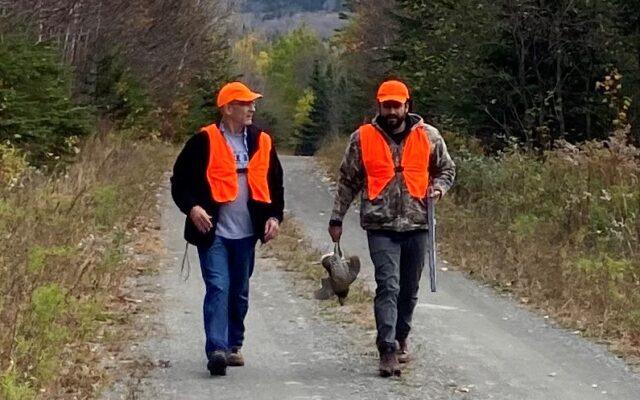
Maine hunters may see fewer ruffed grouse this fall
By Pete Warner, Bangor Daily News Staff
It was a long, wet, cool spring across the state.
That forced many Mainers to alter some of their normal routines, including when they planted gardens, mowed the lawn and could enjoy outdoor activities.
The unusually poor weather is likely to impact hunters in the fall.
While most upland bird hunters aren’t overly concerned right now about the prospects for ruffed grouse season, perhaps they should be.
Grouse living in areas of Maine that experienced considerable rain and colder temperatures in late May and early June, when the females are sitting on eggs, are likely to have suffered losses.
“The general rule of thumb is a couple of weeks straight of rain lead to lower survival,” said Kelsey Sullivan, game bird biologist for the Maine Department of Inland Fisheries and Wildlife.
How bad might things be?
“I don’t think it’s going to be catastrophic, but production will be lower,” Sullivan said.
Sullivan explained that there are essentially two hatches for ruffed grouse, the second of which is going on now. But that nesting period also is likely to be negatively affected by the weather.
“I think we hit that threshold where the weather was bad long enough that we will see some negative effects,” Sullivan said.
He cited as evidence observations of broods of wild turkey poults, some of which are smaller than expected, and said the trend is expected to translate to grouse as well.
“I think that’s related to some of the rain,” Sullivan said. “We’ll see some signature of that in the fall.”
Sullivan said it’s common for the production of grouse chicks to respond negatively to poor weather. Conversely, dry springs and summers usually result in good reproduction and chick survival.
In spite of the expected reduced numbers of grouse, he is not expecting the kind of population crash that occurred in 1995, when the wildlife department considered closing the December portion of the season.
Undaunted, the grouse rebounded from that bad year.
Unlike other species, which may not reach a suitable size during the first five months of life, ruffed grouse are big enough to be harvested in the fall of the year in which they are born.
“A lot of the harvest is young birds because those birds are moving. They hatch and they emigrate somewhere else,” Sullivan said.
Regional biologists will be making bird observations during the summer, in July and the beginning of August. That data will help inform Sullivan about just how significantly the spring conditions affected chick survival.
However, some surveys of “drumming” grouse this year also produced below average numbers of male birds making their mating call.